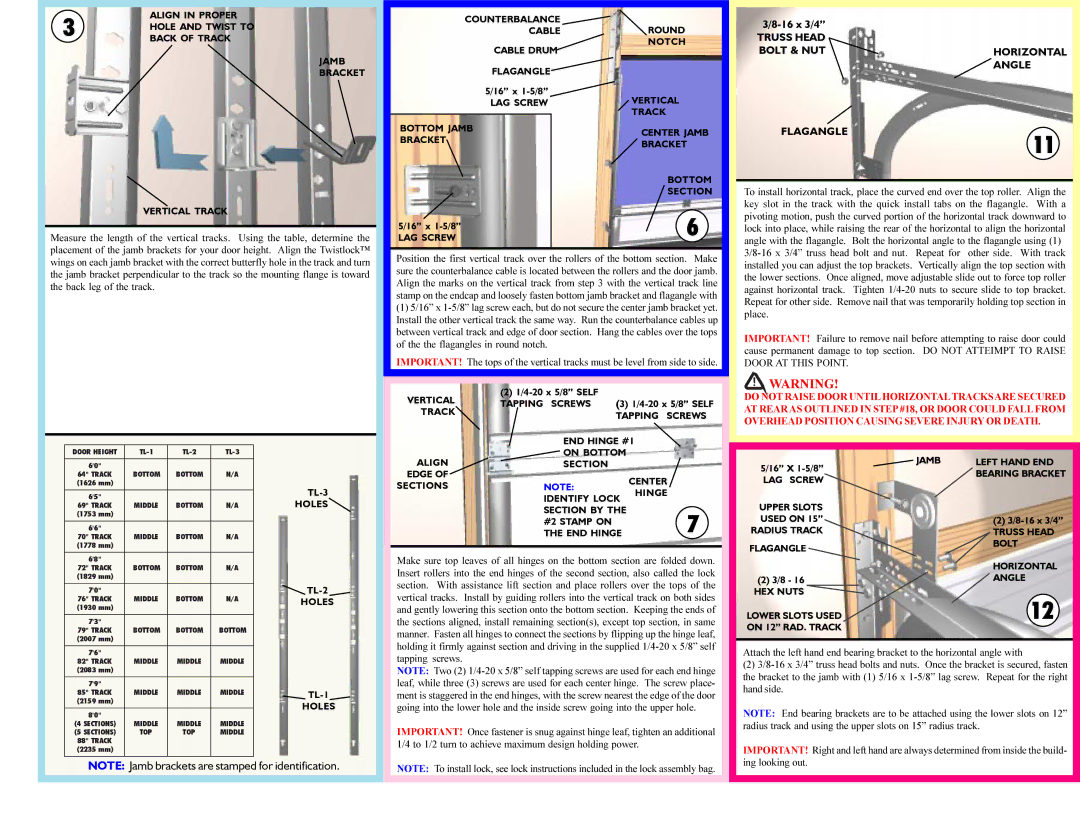9600 Thermoguard, 9900 Thermowayne, 9200 Foamcore specifications
Wayne-Dalton offers a range of high-performance garage doors designed for durability, insulation, and aesthetic appeal. Among their standout products are the 9200 Foamcore, 9900 Thermowayne, and 9600 Thermoguard models. Each of these doors is engineered to meet various needs, combining advanced technologies with attractive designs.The Wayne-Dalton 9200 Foamcore door features a unique construction that integrates a polyurethane foam core, providing excellent thermal insulation while minimizing weight. This door is ideal for homeowners looking for energy efficiency, as the polyurethane foam offers an R-value of up to 16.9. The 9200’s steel exterior is available in a variety of colors and finishes, enabling customization that enhances curb appeal. The door’s low-maintenance surface makes it resistant to dents and scratches, while its construction helps to reduce noise and improve security.
The 9900 Thermowayne is another exceptional model, designed specifically for energy efficiency and functionality. This model features a triple-layer construction combining an outer steel layer, a polyurethane insulation core, and an inner steel layer, resulting in an R-value of up to 18.4. The Thermowayne doors are also equipped with an exclusive 2-inch thick door design that minimizes heat transfer, making it an excellent option for regions with extreme temperatures. The 9900 series comes in numerous panel designs and colors, allowing homeowners to select a configuration that complements their home’s architecture. Additionally, the door is finished with a durable paint that resists fading and is easy to clean.
Finally, the Wayne-Dalton 9600 Thermoguard model takes insulation to the next level with its double-layer construction. This door combines a CFC-free polystyrene core between two layers of steel, providing an exceptional R-value of up to 19. The Thermoguard’s design not only enhances thermal performance but also contributes to sound attenuation, making it suitable for homes located in noisy environments. The 9600 series is available in various styles, ensuring a perfect match for any home. Its weather seals and reinforced structure contribute to its longevity and resistance to the elements.
In summary, Wayne-Dalton’s 9200 Foamcore, 9900 Thermowayne, and 9600 Thermoguard garage doors offer exceptional insulation, durability, and aesthetic options to meet diverse homeowner needs. By integrating advanced technology and high-quality materials, these doors not only enhance energy efficiency but also elevate the overall look of a home.

